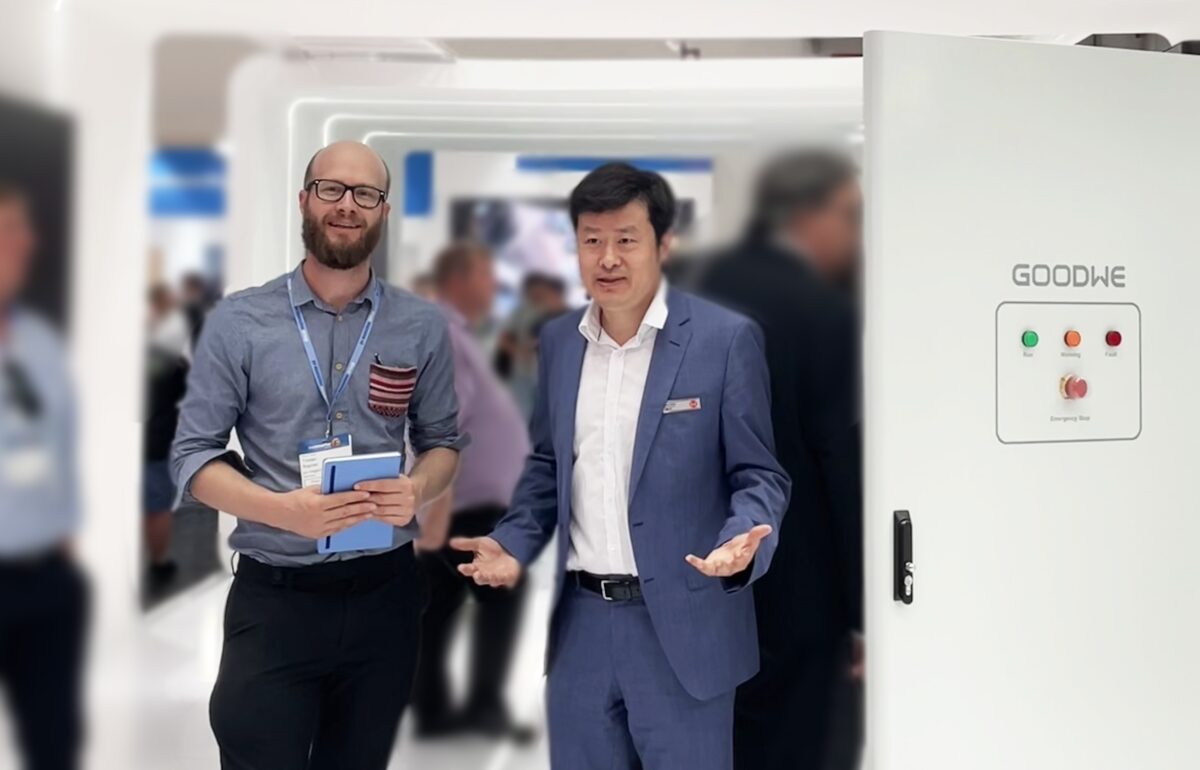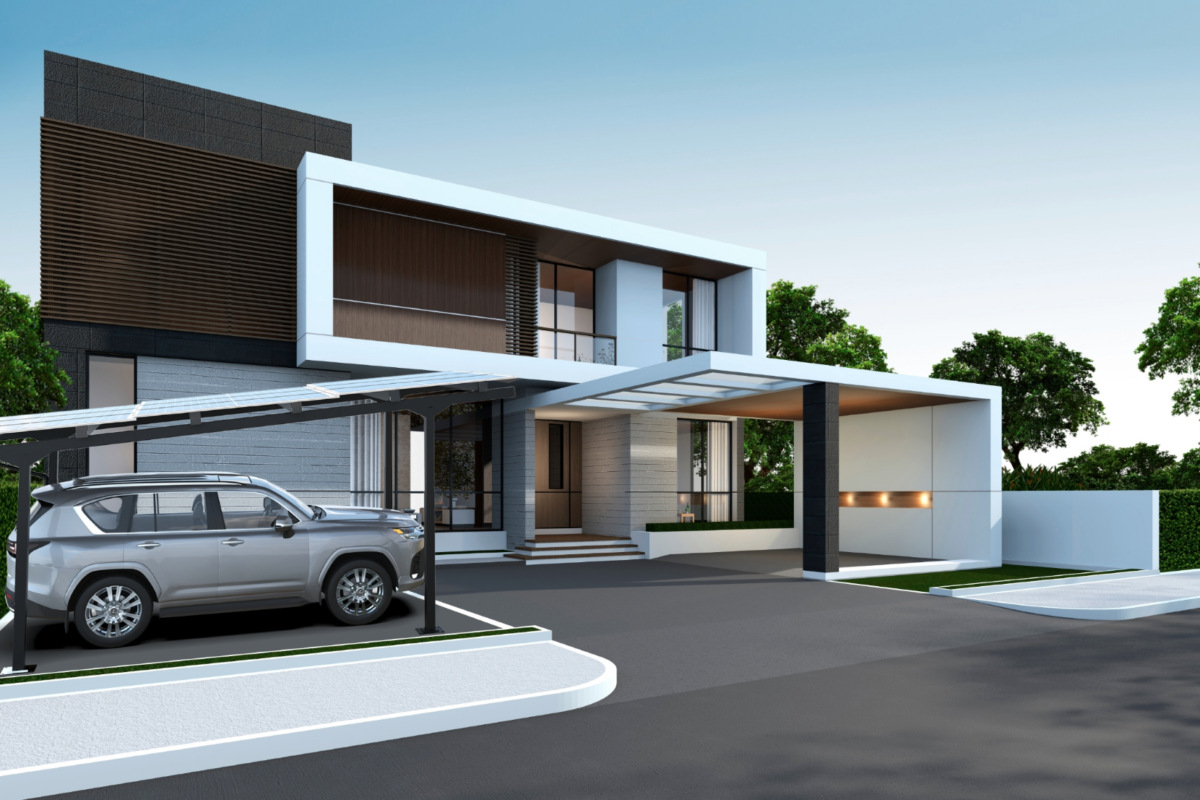GoodWe Vice President Ron Shen detailed his company’s transition as it expands its reach beyond inverters and into batteries, building-integrated PV (BIPV) for rooftops, and residential storage integration software platforms. He also shared his predictions for solar’s ongoing growth.
Let’s start with the highlights from GoodWe at Intersolar this year – you have a bigger booth than ever, it seems.
Actually, if you look around our booth, you'll notice that we have a comprehensive portfolio in the market. We are transitioning from being a product supplier to a solution provider. For example, our EcoSmart Home solution, includes inverters, batteries, BIPV for rooftops, as well as our software platform for residential storage integration. On the commercial side, we offer new products such as string and hybrid inverters, BIPV, and we are developing an EMS for overall management of the commercial storage system. In essence, we provide customers with an end-to-end solution.
And you’ve also expanded into utility-scale products over the past year or so…
Yes, we are focused on three main domains: residential, commercial, and utility-scale solutions. The utility side is a new area for us, but we have made significant progress. We offer various big and small inverters, including the GW250K-HT inverter, SCU communication box, and MV station with a monitoring system which provides customers with flexibility to access data and manage the system.
Is there a particular region where you see the most utility-scale progress?
Europe is the region where we have seen significant progress. We have established competency centers globally, such as in India, Brazil, Germany, and Spain, with local experts leading the solutions commercially and technically. We have made breakthroughs in Germany, Italy, Spain, and Ireland, where we have signed deals for large-scale projects. We are also seeing new projects in South America and Southeast Asia.
How do you balance your vision for new products with customer requests?
Balancing our vision and customer requests is crucial. We have a yearly roadmap that aligns with our vision of being a solution provider. We identify missing elements and develop them as the next step, such as the EcoSmart Home solution. We also consider customer feedback and collaborate closely with them to incorporate desired features. We analyze each feature request to determine if it aligns with our goals and gives us a competitive advantage. Our expertise helps us make informed decisions and stay ahead in the market.
The industry faced supply issues during the pandemic. How have you adapted?
The pandemic presented significant challenges for the industry, including component supply and logistics. However, we have learned from these experiences and made improvements. We have established a strategic partnership with a top IGBT supplier, ensuring component security. We have also qualified new suppliers and diversified our component offers through a stringent verification process. This has mitigated risks on the supply side, and we have mostly recovered. Lead times for most components have returned to normal, and we are pursuing operational excellence throughout the supply chain.
What is GoodWe's production capacity and product portfolio split?
We have a production capacity of 30 GW for inverters and 2.1 GWh for batteries. We plan to expand these capacities further but of course we will see how the market goes and our strategy should be in a smart way. In terms of capacity, more than 60% of our demand comes from the C&I and utility sectors, while 30% to 40% is residential and small C&I. We have introduced an automatic production line for inverters, allowing us to be more flexible and adjust to demand. We anticipate significant growth in the C&I and utility sectors, potentially doubling or tripling our baseline.
How is GoodWe's R&D focused on current and new technologies?
R&D is a priority for us as we strive to be a solution provider. We invest around 8% of our revenue each year in R&D, which I believe is more than sufficient.
Our strategy includes investment in both hardware and software to drive product innovation and build our platform. We align our R&D resources with market trends, particularly in the booming C&I segment and storage solutions. We aim to remain innovative and meet the evolving needs of our customers.
In a previous interview with us, you gave us pretty accurate forecasts for the global PV market. Looking into the crystal ball again, what do you foresee for the global PV market in 2023? What capacity will be added?
Overall, I expect the market to continue growing well. While there may be occasional hiccups, the market remains strong. I anticipate 20% to 40% growth in the next two years. If 2022 reached 250 GW, I believe 2023 will be around 300 GW to 320 GW. The driving factors include demand, cost reduction efforts, and advancements in technology that make grid parity more achievable and cost-effective than conventional resources. However, global economic conditions and installer capacity will also play a role in the actual growth rate.
This content is protected by copyright and may not be reused. If you want to cooperate with us and would like to reuse some of our content, please contact: editors@pv-magazine.com.




3 comments
By submitting this form you agree to pv magazine using your data for the purposes of publishing your comment.
Your personal data will only be disclosed or otherwise transmitted to third parties for the purposes of spam filtering or if this is necessary for technical maintenance of the website. Any other transfer to third parties will not take place unless this is justified on the basis of applicable data protection regulations or if pv magazine is legally obliged to do so.
You may revoke this consent at any time with effect for the future, in which case your personal data will be deleted immediately. Otherwise, your data will be deleted if pv magazine has processed your request or the purpose of data storage is fulfilled.
Further information on data privacy can be found in our Data Protection Policy.